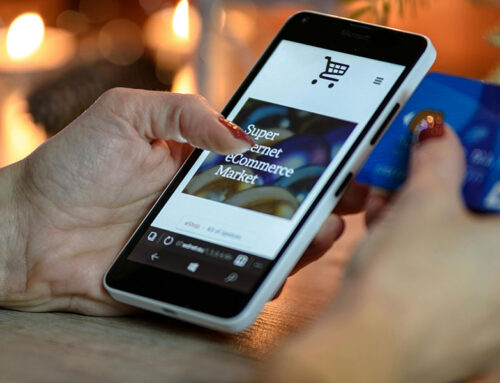The immense breadth of the online world serves as both blessing and curse to digital marketers. On the positive side, it provides boundless opportunities to promote whatever you want — no matter how widely you spread your efforts, there will always be channels, platforms and niches that you’ve yet to target. There’s never a fresh chance to hit it big.
On the negative side, every other marketer has access to the same opportunities, so you’ll be left at a huge disadvantage if you fail to adapt. Just as small brick-and-mortar sellers in certain industries (particularly electronics) were driven out of business during the rise of ecommerce, you can’t use narrow marketing tactics and expect to survive.
Instead, you need to adopt a multichannel marketing strategy to reach as many people as possible — so how can you do it? It’s not easy, certainly, but it isn’t that hard. Here’s how you can make the most of your multichannel marketing opportunities:
Rank channels by priority
Though you can’t use narrow marketing tactics, as noted, you also can’t commit attention to every possible channel. There are simply too many ways to reach people. It’s like spinning plates: if you try to keep them all going, you’ll likely see them all hit the ground fairly swiftly.
What you must do, then, is figure out which channels are most worthy of your attention and effort. Where does your audience spend its time online? Are you likely to find them on Twitter, or using Instagram, or posting on Reddit? Ideally, you should pick out the top 3 or 4 channels, and use them as the cornerstones of your strategy.
Does this mean you can’t share content through other channels? No, definitely not. You just shouldn’t spend much time on it. If you’re in a position to do it without taking up any effort, go for it. At the very least, it isn’t going to hurt.
Focus on flexible content
Imagine that you want to produce content for 4 distinct channels. You want to share an infographic on Twitter, a story on Instagram, a full post on Facebook, and even a podcast through something like Podbean. If you approach each piece of content as wholly distinct, it will take you a long time to get everything done.
Now imagine that you create a flexible piece of source content — you can think of it as similar to a primordial soup from which different varieties of life can spring. You write down ideas, pieces of research, visuals, and text that can be trimmed or expanded as needed.
You can then adapt that source content to each channel: record it as a podcast, frame it into a full post, shape it into an infographic, etc. In the end, you’ll have several pieces of content that cover the same topic but do so in slightly-different ways, without spending anything close to the time it would have taken you to make them completely distinct.
Make content directly actionable
Marketing very broadly is just the beginning, because you ultimately want that process to lead somewhere. If you’re trying to sell online (as is most common for multi-channel marketers), then you want people to reach your website and convert — but that’s a tricky process. A lot can go wrong following initial marketing exposure, after all.
This is why it’s becoming more and more common for online merchants to make their products purchasable directly through external channels. Indeed, native support for additional channels has become one of the core CMS selling points for winning retailer business (with both being popular, it’s central to a Shopify and Magento comparison, for instance).
Whether you use an ecommerce CMS with baked-in multichannel selling, or find a suitable plugin, app or extension to enable it (such as ChannelUnity for Magento), you should take every opportunity to make your marketing content directly actionable. If someone is ready to buy, you need to make it as easy as possible.
Get channels working together
Never forget that the path to conversion is rarely short. More often than not, it will take numerous brand interactions for someone to develop meaningful interest in taking action to seek out whatever you’re offering — so while you should certainly account for those ready to buy right away (as noted), you should expect them to need more time.
Because of this, you should factor in whatever you can glean about where people are in your marketing funnel. It might be the case that your Instagram followers are less familiar with the basics of your business than your Twitter followers, for instance (they may simply have followed for the nice visuals). If so, you shouldn’t use the same content for each channel.
In that scenario, you should serve basic introductory content to your Instagram followers, and more sales-oriented content on Twitter (to the people more likely to be genuinely interested). This will help the channels work together, with each one pushing people deeper into the marketing funnel. You can even directly link them together — have your Reddit posts link to your social media accounts, and your social media accounts link to your homepage, etc.
Automate.io: Automate.io is a simple solution for connecting your everyday business apps like Shopify. You can set up workflows across multiple apps – or just setup data sync between any two apps. You can not only save time but also makes your work marketing, sales and business processes more efficient.
Use comprehensive analytics
Even the most basic marketing campaign needs to be optimized over time, because there are so many things you can’t know ahead of time: which types of content will resonate with your audience, how long it will take you to get things done, and what kind of ROI you’ll reach. That’s why analytics
A multichannel campaign is much more demanding, because you have traffic coming from a variety of sources, and each visit can have a wildly-different backstory. If you can’t tell which channel is driving the most traffic, or exactly the audiences differ, you won’t be able to course-correct if you’re not getting the results you want.
You’ll likely need to set some custom Google Analytics goals for this, and use dedicated multichannel marketing funnels to figure out how exactly people are proceeding through your marketing funnel. The more granular you can get with the breakdown, the better it will serve your efforts in the long run.
Multichannel marketing isn’t about being everywhere, because that’s simply impractical. It’s about broadening your approach to encompass the best channels for whatever you’re trying to promote, understanding that sticking to just one channel won’t get you very far. Try these tactics, and you’ll start to turn multichannel marketing opportunities into qualified leads and, ultimately, conversions.






Leave A Comment